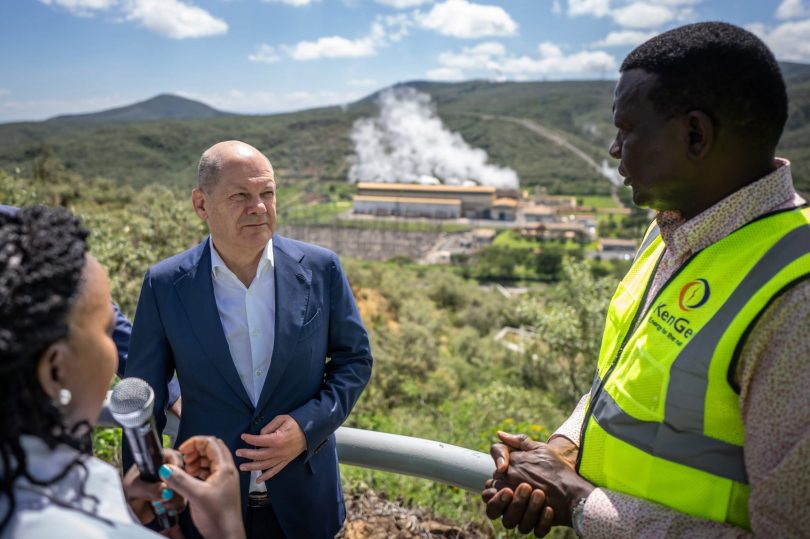As far as foreign aid goes, Germany stands as one of the world’s giants. In 2022, Germany was the OECD’s second largest donor by volume, after the US, and was the EU’s largest bilateral provider. In terms of aid as proportion of gross national income (GNI), it is by far the most generous country in the G7 cohort of large, advanced economies (see Figure 1). According to the OECD’s latest figures, in 2022 Germany’s official development assistance (ODA) spending totalled almost €33 billion (US$35.6 billion), or 0.85% of GNI.

For this reason, a recent decision by Germany’s progressive coalition government to make large cuts to aid as part of an austerity drive is a significant story, albeit one that is unlikely to receive any attention beyond the European media.
The cuts come in the wake of slowing economic growth and a ruling by the country’s constitutional court last November that the government could not go ahead with a plan to use unspent COVID-19 emergency funds to cover new climate change spending, creating a €17 billion deficit. Germany’s constitution limits net government borrowing to 0.35% of the country’s annual national income.
In response, the German government has decided to cut spending across most portfolios – apart from defence – in 2024, and has singled out aid for some of the largest cuts. According to Deutsche Welle, international development spending in 2024 will be reduced by almost €2 billion compared to 2023. This is the equivalent of over two-thirds of Australia’s entire aid budget (A$4.77 billion) for 2023-24.
While sizeable, the cuts are unlikely to have a major impact on Germany’s ODA/GNI ratio or its favourable generosity ranking, particularly in an environment of weaker growth. However, given Germany’s overall size as an aid donor and the quantum of the individual cuts involved, they will be felt in some key sectors and by some of Germany’s biggest aid partners.
According to reporting by the UK-based One Campaign, the cuts include an 8% (-€940 million) nominal cut in funding for development programs run by Germany’s federal ministry for cooperation and development (BMZ), and cuts to funding for the World Food Programme (-26%; -€20 million), peace and stability programs (-18%; -€478 million), and multilateral aid (-5%; -€117 million).
Unsurprisingly, these cuts have been criticised by German aid advocates who have argued that they undermine Germany’s claim to be a “stable and reliable partner”, will have a negative “signalling effect” on other donors and put at risk the governing coalition’s agreement to maintaining Germany’s ODA/GNI ratio above 0.7%. They have highlighted the large reductions in overall humanitarian assistance as being of particular concern given surging climate disasters and protracted crises. According to one set of analysts, the cuts represent “a major setback in the international ODA system” that will “prevent vital emergency relief systems from reaching people in crisis and jeopardise funding for long-term projects improving community resilience and quality of life.”
But Germany is not alone. Other major European donors like the UK have made big cuts to aid in the last several years, with devastating consequences in sectors like sexual and reproductive health. Development budgets have even come under pressure in traditional aid stalwarts like Norway and Sweden with the continued rise of populist, right-wing and anti-immigration political parties. In Germany itself, the far-right Alternative for Germany (AfD) party, which is advancing in opinion polls, has reiterated its aim to reduce federal spending “in the areas of migration, climate and development policy.”
Bilateral and multilateral aid has also come under pressure from the sharp increases in European and other official donors’ spending on accommodating the surge in refugee arrivals resulting from Russia’s 2022 invasion of Ukraine. According to the OECD’s final figures, these costs totalled $US32 billion in 2022, up from US$13 billion in 2021. The EU has recently re-allocated over €2 billion in development, climate and humanitarian funding to pay for a new “migration and asylum pact” focused on curbing the entry of people fleeing worsening conflicts and disasters in Africa and the Middle East.
Germany’s aid cuts won’t have any direct consequences for Australia’s neighbours. Notwithstanding Berlin’s increased focus on this part of the world, Germany is not a big Pacific donor. But, coupled with the uncertainty around US aid in the face of a dysfunctional legislature and ahead of the November presidential election, the cuts suggest a tough year ahead for global aid, particularly that directed toward financing “global public goods” – like humanitarian assistance, health and climate change – and the world’s poorest countries.
Australia routinely professes its support for the global “rules-based order” and for the institutions that support this order. As the world’s aid giants stumble, in 2024 there is likely to be even less certainty as to how it will be paid for.
Disclosure
This research was undertaken with the support of the Bill & Melinda Gates Foundation. The views are those of the author only.


Leave a Comment